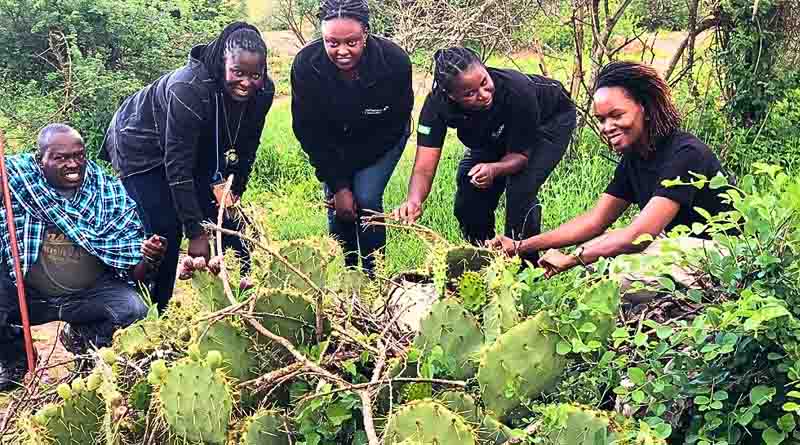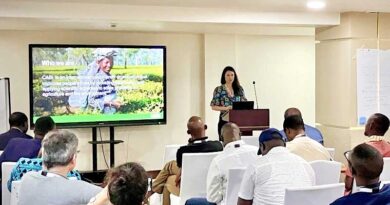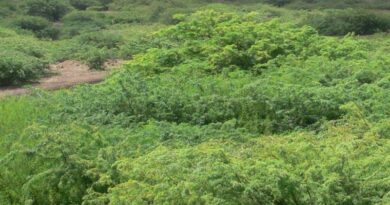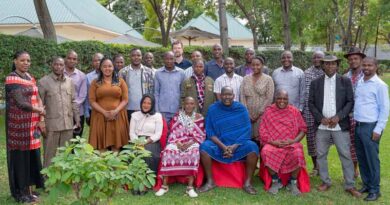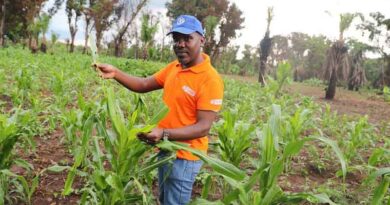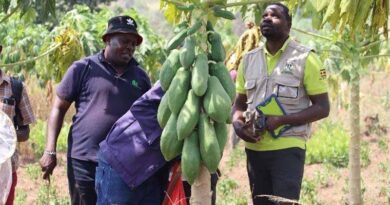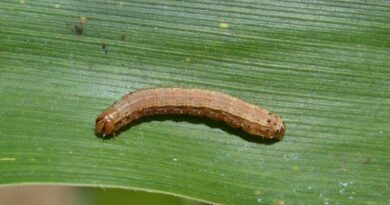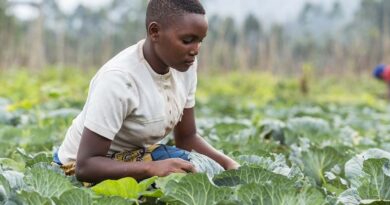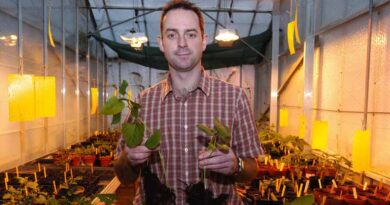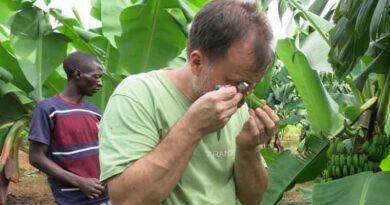Drones, insects and local community to tackle Kenya’s thorny problem
27 March 2024, Kenya: In Laikipia, 253 kilometres north of Nairobi, Kenya, an unlikely trio of drones, the local community, and a tiny sap-sucking insect, have joined forces to take on a thorny problem – the spread of invasive prickly pear cactus Opuntia engelmannii.
Otherwise more commonly known as Englemann’s Prickly Pear, the cactus – which is native to south-central and Southwestern USA and northern Mexico – has rapidly spread across the landscape of Loisaba and into the Lower Naibunga in Laikipia North, writes Eunice Murathe, Corporate Communications Officer at CABI.
Encroaching on valuable grazing areas for livestock and wildlife, this invasion poses a direct threat to the community’s livelihood. Communities in northern Kenya are heavily dependent on livestock. In this semi-arid region, pastoralists rely on cattle, goats, and sheep as a source of income and struggle with frequent drought and poor pasture.
Prickly pear cactus poses a perilous problem
The prickly pear cactus impacts upon the availability of forage and the large spines from the cactus can often blind livestock that try to find food. It displaces native plant species and prevents the rehabilitation of degraded land.
Driving down the rugged roads into Lower Naibunga communal land, you’ll find the cactus in dense stands everywhere. Its flowers display vibrant yellows, some with red or pink patterns with dozens of plum fruits.
The cactus stand can span a length of 30-40 meters, boasting hundreds of cladodes – or shoot systems in which leaves do not develop – as well as fruits, and flower buds.
This expansive display not only highlights the plant’s reproductive prowess but also highlights its rapid spread potential through various vectors, such as the dispersal of fruits and cladodes.
Christine Metto, a mother of seven, says the cactus causes constipation in her children who are sometimes unwittingly enticed to try its colourful fruits. But it’s not just her family who are at risk. Their animals suffer too. Goats and camels, which are essential for both her and the community’s livelihood, endure mouth lacerations, blindness, and even death from ingesting the cactus’s tiny thorns and seeds.
Removing the cactus by hand is too difficult and impractical, and burning it is pointless. With the first rain, it will regenerate, bloom, and produce more fruit.
Sap-sucking insect offers promising solution
With support from The Nature Conservancy, scientists from CABI’s regional centre for Africa in Nairobi, are working with the local community to manage the prickly pear cactus pest with a sustainable and safer-to-use biological control agent Dactylopius opuntiae, (prickly pear cochineal).
This sap-sucking insect is the biotype specific to Opuntia engelmannii and may well provide the key to controlling the cactus as it did with a similar non-native cactus species – Opuntia stricta (erect prickly pear) – at the Kruger National Park in South Africa.
CABI, in partnership with The Nature Conservancy, sourced the cochineal from Texas, USA and evaluated it for specificity and impact in South Africa before releasing it into the Loisaba Conservancy, neighbouring the communal lands of Naibunga. Since then, this agent has been mass-reared and effectively deployed in Loisaba for many years.
Joining forces with the local community
Since September 2023, CABI has been working with the Lower Naibunga community to prevent the spread of the cactus into upper and central Naibunga. This collaboration has included the establishment of mass rearing facilities for the insect, the mapping of Opuntia species distribution, and community capacity building.
CABI also, in February this year, conducted a series of Focus Group Discussions (FGDs), to share with the community about biocontrol methods and monitoring procedures. The participants showed a deep understanding of the invasive species present in their community – particularly their longstanding encounter with Opuntia, dating back more than a decade.
CABI collaborated closely with local stakeholders to establish three community-led mass rearing units for prickly pear cochineal within the Lower Naibunga Community Conservancy and community land invaded by the prickly pear cactus.
The sites, where rearing units have been set up, were strategically selected based on the presence and density of the cactusinvasions within the landscape. This is to ensure easy access to invaded areas when mass release will take place, since the project relies on community engagement to spread the agent.
Christine Metto’s household serves as the host for one of these units. She and her community are determined to manage the site and spread the insect to combat the non-native cactus that is taking over large swathes of their land.
She said, “We tried cutting the cactus, but they keep growing. The insects are thriving, so I’m happy we have this screen house for a lasting solution. It’s our only hope right now.”
The screen house is a facility which is helping to rear the cochineal which members of the community hope will stave off the spread of the invasive prickly pear cactus menace.
Biological control is the most effective strategy
Building on past successes in addressing Opuntia stricta, the community recognised the potential for this bio-control approach to also have a positive impact on the environment where they live.
Biological control stands out as the sole effective option for managing “Matundai” (the local name for Opuntia Engelmanii), emphasized Mathew Naiputari, the community leader and chair of the Lower Naibunga community conservancy.
He urged the community to take ownership of the project, stressing that it is the key to its success and long-term sustainability.
“We attempted manual control by uprooting, but it kept regrowing. Now that we have the cochineal here, we’ll distribute it to community lands so others can also benefit from it,” he said.
Winnie Nunda, Research Officer, Invasive Species Management at CABI, said engaging the community in the decision-making process and implementation of this method ensures a sustainable and locally tailored solution.
Ms Nunda said, “The initiative’s success relies on active community involvement and empowerment. Residents, armed with specialized knowledge and training, play a pivotal role in the rearing, and spread of cochineal within their respective territories.”
She added that the community members, selected to host and manage the rearing units, underwent intensive training on mass-producing cochineal and maintaining optimal cultures for field releases.
The CABI team also provided technical expertise, offering detailed explanations of the rearing process, management of cochineal cultures, and the significance of biocontrol measures within an integrated management approach.
Phyllis Ombonyo, Head of Strategic Partnerships for Africa at CABI, emphasized, “CABI ensures that communities are the centre of our development efforts for us to succeed. We are, therefore, pleased to see the community’s commitment to these efforts.”
Using drones to map Opuntia Coverage in Naibunga Community Conservancy
CABI employed drones to meticulously map the Opuntia coverage across various clusters within the Naibunga Community Conservancy. Operating over predefined zones, the drones captured aerial imagery.
Subsequent analysis of these images involved the calculation of diverse vegetation indices to gauge water levels, chlorophyll content, spectral reflectance, and the overall condition of the prickly pear cactus.
Violet Ochieng, CABI’s Research Officer – Invasive Species Management, Drone Technology, said, “Baseline data is important for monitoring whether the beneficial insects (cochineal) is reducing the spread of Opuntia. Drones offer the potential to collect this data in real-time compared to ground surveys, which may be inaccurate, expensive, tiresome, and time-consuming.”
Also Read: IRRI-NARI agreement will revitalize Papua New Guinea’s rice industry
(For Latest Agriculture News & Updates, follow Krishak Jagat on Google News)

